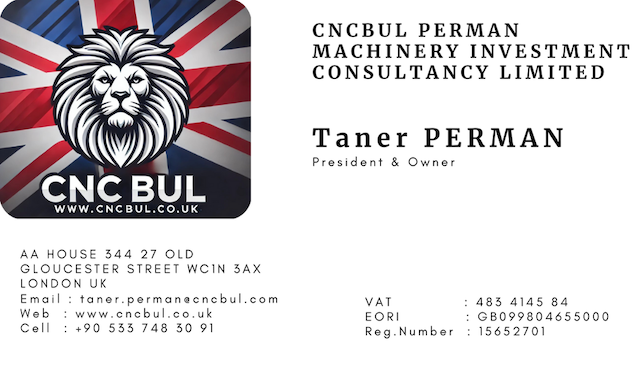12/08/2024
How to Maximize Your CNC Vertical Machining Center?
Maximizing the performance of your CNC Vertical Machining Center (VMC) involves optimizing several aspects of its operation, from tooling and programming to maintenance and machine setup. Below are technical strategies to enhance the efficiency, precision, and longevity of your VMC:
1. Optimize Tooling and Tool Management
- High-Performance Tools: Use high-quality, coated tools designed for specific materials to increase cutting speed and tool life.
- Tool Holders: Ensure that tool holders are balanced and in good condition to reduce runout and improve machining accuracy.
- Tool Length Optimization: Minimize tool length to reduce deflection and vibration, leading to better surface finishes and longer tool life.
- Tool Monitoring: Implement tool monitoring systems to track wear and prevent tool breakage, reducing downtime.
2. Improve Programming Efficiency
- High-Efficiency Machining (HEM): Use HEM strategies, such as constant chip load, to optimize cutting conditions, reduce cycle times, and extend tool life.
- Optimized Tool Paths: Use CAM software to create efficient tool paths that minimize non-cutting movements and reduce machining time.
- Adaptive Machining: Implement adaptive machining techniques that adjust the feed rate and spindle speed in real-time based on cutting conditions.
- Minimize Air Cuts: Ensure that the program minimizes air cuts, where the tool moves without engaging the material, to save time.
3. Enhance Machine Setup and Calibration
- Machine Calibration: Regularly calibrate the machine’s axes to ensure accuracy and precision, including checking for squareness, alignment, and backlash.
- Fixture Design: Use modular and quick-change fixtures to reduce setup time and improve part positioning accuracy.
- Probe Systems: Implement probing systems for automatic part alignment, tool setting, and in-process inspection, reducing setup time and human error.
- Thermal Compensation: Use thermal compensation software or systems to adjust for thermal growth in the machine during operation.
4. Maximize Spindle Utilization
- High-Speed Machining (HSM): Utilize high-speed machining techniques, including optimized feed rates and reduced depth of cut, to increase material removal rates while maintaining accuracy.
- Spindle Warm-Up: Always perform a spindle warm-up routine before starting high-speed operations to avoid thermal shock and extend spindle life.
- Balanced Workload: Distribute workloads evenly across shifts to avoid overloading the spindle, which can lead to premature wear.
5. Optimize Coolant and Lubrication Systems
- High-Pressure Coolant: Use high-pressure coolant systems to improve chip evacuation, reduce heat, and allow for more aggressive cutting parameters.
- Coolant Management: Regularly monitor and maintain coolant levels, concentration, and cleanliness to prevent contamination and ensure consistent cooling performance.
- MQL (Minimum Quantity Lubrication): For specific applications, use MQL to reduce coolant consumption and improve tool life.
6. Implement Preventive Maintenance
- Scheduled Maintenance: Adhere to a strict maintenance schedule, including lubrication, filter changes, and inspections of key components like ball screws, guides, and bearings.
- Vibration Analysis: Use vibration analysis to detect early signs of mechanical issues, such as bearing wear or misalignment, before they lead to significant downtime.
- Laser Calibration: Perform laser calibration regularly to ensure machine accuracy over its entire working envelope.
7. Utilize Advanced Machine Features
- Dynamic Work Offsets (DWO): Use DWO and Tool Center Point Control (TCPC) to simplify multi-axis setups and improve accuracy without recalculating tool paths.
- Through-Spindle Coolant (TSC): Use TSC for deep hole drilling and other applications where coolant needs to be delivered directly to the cutting edge.
- Automatic Pallet Changers (APC): Implement APC systems for high-mix, low-volume production to reduce downtime between setups.
8. Data-Driven Optimization
- Machine Monitoring: Use machine monitoring software to track performance metrics, such as spindle utilization, cycle times, and downtime, to identify areas for improvement.
- OEE (Overall Equipment Effectiveness): Calculate and analyze OEE to understand how effectively your VMC is being used and identify opportunities for increasing productivity.
- Feedback Loops: Implement feedback loops between the CNC machine and CAD/CAM software to adjust programs based on real-time performance data.
9. Training and Skill Development
- Operator Training: Ensure that operators are fully trained on all aspects of machine operation, including advanced programming techniques, tool management, and maintenance procedures.
- Cross-Training: Cross-train staff on different machines and processes to increase flexibility and reduce dependency on specific individuals.
10. Leverage Automation
- Robotic Loaders: Integrate robotic arms for automatic loading and unloading of workpieces, reducing manual handling time and increasing spindle uptime.
- In-Line Inspection: Implement automated in-line inspection systems to check part quality without stopping the machine, reducing scrap and rework.
By following these technical strategies, you can significantly enhance the performance, accuracy, and productivity of your CNC Vertical Machining Center, ultimately leading to higher-quality products and more efficient operations.


